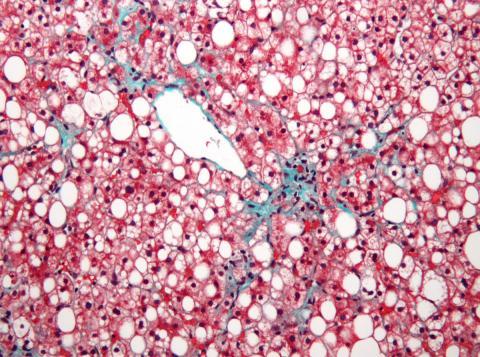
Volume 10, Issue 1, January 2015
Dr. Anthony W.H. Chan
Associate Professor Department of Anatomical and Cellular Pathology, Prince of Wales Hospital, The Chinese University of Hong Kong
Introduction
Non-alcoholic fatty liver disease (NAFLD) is a serious global health problem and associated with over-nutrition and its related metabolic risk factors including central obesity, glucose intolerance, dyslipidaemia and hypertension. It is the most common metabolic liver disease worldwide and its prevalence in most Asian countries is similar to that in the States, Europe and Australia. About 10-45% of Asian population have NAFLD. With “westernized” sedentary lifestyle, the prevalence of NAFLD in general urban population in the mainland China is about 15%. NAFLD is even more prevalent in Hong Kong. Our recent study demonstrated that NAFLD is found in 27.3% of Hong Kong Chinese adults by using proton-magnetic resonance spectroscopy. We further realized that 13.5% of Hong Kong Chinese adults newly develop NAFLD in 3-5 years. Both prevalence and incidence of NAFLD in Hong Kong are alarmingly high. Accurate diagnosis of NAFLD is crucial to allow prompt management of patients to reduce morbidity and mortality. NAFLD is composed of a full spectrum of conditions from steatosis to steatohepatitis (NASH) and cirrhosis. Various non-invasive tests, based on clinical, laboratory and radiological tests, have been developed to assess the degree of steatosis and fibrosis in NAFLD. However, liver biopsy remains the gold standard for characterizing liver histology in patients with NAFLD, and is recommended in patients with NAFLD at high-risk of steatohepati tis and advanced fibrosis (bridging fibrosis and cirrhosis), and concurrent chronic liver disease of other aetiology. This article reviews pathological features of NAFLD and highlights some practical points for our daily diagnostic work.
Download Topic Update for Pathology of Non-Alcoholic Fatty Liver Disease
